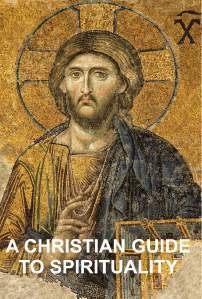Stephen W. Hiemstra's Blog, page 272
January 7, 2015
¿Lo Que es Espiritual Acerca de Matrimonia y Familia?

Maryam and Stephen 1984
“Mujer hacendosa, ¿quién la hallará? Su valor supera en mucho al de las joyas.” (Prov 31:10 NBH)
Por Stephen W. Hiemstra
¿Cómo la matrimonia ha transformado tu vida? Si tu no estás casada, ¿cómo la matrimonia de tus padres ha impactado tu vida?
La escritura empieza y termina con la matrimonia. En Génesis, vemos un pareja, Adán y Eva, quien se acaba de hacer uno para la otra! En el Libro de Apocalipsis, un ángel nos informa: “Bienaventurados los que están invitados (los llamados) a la cena de las Bodas del Cordero.” (Rev 19:9 NBH) Obviamente, la matrimonia fue la idea de Dios (Keller 2011, 13).
Como un promesa incondicional—hasta que la muerte nos separe, la matrimonia es también formativa y da un paradigma por otros pactos. Se implica que la matrimonia, en si mismo, pueda funcionar como una disciplina espiritual.
Los comentarios del Apóstol Pablo en los matrimonios de mezcla fe resaltan en el carácter formativo del matrimonio. Pablo nos informa que el cónyuge creyente hace el matrimonio santo para los niños (1 Cor 7:12-14). Pablo también vea el matrimonio como un atestiguando oportunidad. Pablo pregunta: “¿cómo sabes tú, mujer, si salvarás a tu marido? ¿O cómo sabes tú, marido, si salvarás a tu mujer?” (1Cor 7:16 NBH) [1] Mi punta aquí no es a abogar un posición particular pero a reconocer que el matrimonio tiene una componente de sacrifica que se pierde frecuentemente en nuestra tiempo de divorcio de no-falta.
En otras palabras, Pablo ve claramente que el matrimonio posee una componente sacrifica [2]. La enseñanza de Jesús propia sobre el divorcio y el nuevo matrimonio dibuja claramente inspiración, no por la Ley de Moisés (lo que admite las excepciones), pero en lugar de la obra eterna de Dios en creacion [3].
Pero si el matrimonio es una disciplina espiritual, ¿cómo nos acercamos más a Dios?
El matrimonio es formativo en nuestro fe al menos por tres razones. La primera razón es que Dios instituyó el matrimonio y encargó el matrimonio con una bendición y un mandato:”Sean fecundos y multiplíquen se. Llenen la tierra y sométan la” (Gen 1:28 NBH). Dios creó el matrimonio, lo bendijo, y dijo que estaba bien—que obedecer Dios debe acercar nos a él.
La segunda razón es que el matrimonio es formativa porque se comienza con una promesa incondicional. Dios es el guardián promesa eterna. En el matrimonio imitamos nuestro creador. Hacer y mantener buenas promesas—aunque lo es doloroso—transforma nos y acerca nos a Dios.
La tercera razón que el matrimonio es formativa es que rendir nos las cuentas. Nuestros cónyuges conocen nos en la manera bíblica (pactalmente)! Nuestras debilidades y pecados afectan nuestras cónyuges y ellas nos dicen. Pecamos menos, en parte, porque nuestros cónyuges hacen nos más consciente de nuestros pecados—un proceso de santificación que nos cambia—aun si no somos creyentes! Parte de este proceso es a aprender capacidades de reconciliación durante las uso cotidiana .
Como el Apóstol Pablo escribió: “Y todo lo que hagan, de palabra o de hecho, hágan lo todo en el nombre del Señor Jesús, dando gracias por medio de El a Dios el Padre.” (Col 3:17 NBH)
Esta lista de razones por las cuales el matrimonio es formativa es especialmente interesante porque Dios instituyó el matrimonio incluso antes Él instituyó la nación de Israelí o antes Él envió su hijo a morir por la cruz.
Dios no es irracional. Él sabe lo que los mayores beneficiarios del matrimonio son nuestros niños. Y Él los ama tanto como Él nos ama. Esta es probablemente la razón por la que Dios pone una alta prioridad por el matrimonio. Nosotros también debería hacerlo.
[1] Hay muchas cosas escribió sobre la enseñanza tradicional de la iglesia la que no lo quiera volver a casarse después del divorcio. Por ver una discusión de las perspectivas, vea: Wenham, Heth, and Keener (2006).
[2] En la traducción de la iglesia Católica Romana, el matrimonio es también un sacramento.
[3] Deut 24: 1–4, Matt 19:6–9, y Gen 2:24.
[4] El matrimonio es tan importante en el pensamiento del Apóstol Pablo que el uso los códigos domésticos (Eph 5:22–6:10; Col 3:17–4:4) como una metáfora por relaciones en la iglesia. Pablo escribe: “pues si un hombre no sabe cómo gobernar su propia casa, ¿cómo podrá cuidar de la iglesia de Dios?” (1 Tim 3:5 NBH)
REFERENCIAS
Keller, Timothy and Kathy Keller. 2011. The Meaning of Marriage: Facing the Complexities of Commitment with the Wisdom of God. New York: Dutton.
Wenham, Gordon J., William A. Heth, and Craig S. Keener. 2006. Remarriage After Divorce in Today’s Church: Three Views. Grand Rapids, MI: Zondervan.

January 5, 2015
Why Participate in a Small Group?

Mural in Riverside Presbyterian Church
And day by day, attending the temple together and breaking bread in their homes, they received their food with glad and generous hearts, praising God and having favor with all the people. And the Lord added to their number day by day those who were being saved. (Acts 2:46–47)
By Stephen W. Hiemstra
The early church was a small group. Many churches today remain small by choice.
My first small group experience occurred in high school when our senior pastor retired and the youth director left. Overnight our active youth program fell apart. The associate pastor stepped in to fill the gap, but only two of us stuck with the group: my best friend and I. Throughout my senior year in high school, our time together focused on two things: the Book of Romans and Dietrich Bonhoeffer’s book, Cost of Discipleship. Interestingly, my best friend and I are now both pastors.
The original small group is the Trinity—the Father, Son, and Holy Spirit. Because our identities are formed by who we are in relationship with [1], our relationship with the Triune God provides an important example of what a loving, well-functioning community looks like [2].
Another foundational small group is the family. Families talk about every important matter in life. In the family, we learn to talk, pray, and to read scripture. Our families also teach us to joke, to love, to fight, and to reconcile. My first ministry as an adult was to my family.
Jesus did not write a book; he established a small group. This simple observation is remarkable because Jesus drew large crowds—therefore, his focus on disciplining the twelve appeared counter-intuitive. Jesus called the twelve disciples after spending an entire night in prayer (Luke 6:12). The Gospels record how very difficult the journey of faith was for Jesus’ disciples. Not all of them made it (John 6:66).
Small groups provide us the security to make difficult transitions (Icenogle 1994, 126–37) [3]. Most tragedies in life are involuntary transitions. During such transitions, we often cry: Lord—why me? Transitions become growth opportunities when we pray: Lord—why did you bring me to this time and place? Small groups provide a safe place to ask this question while inviting members to wait upon the Lord’s response together.
[1] Maureen Miner (2007, 116) asks an important question: “Can we have a separate and distinct relationship with each member of the Trinity?” If so, striking the right balance requires a community effort which is a mandate for small groups.
[2] This relationship has a name: perichoresis, which means divine dance. It defines the special and intimate relationship we see in the Trinity (Keller 2008, 213–26).
[3] Consultant William Bridges (2003, 43) makes the point that it took Moses maybe 40 days to get the people of Israel out of Egypt, but it took about 40 years to get the Egypt out of the people (Num 11:5). The point is that transitions begin with people looking backwards; proceed through a long period of uncertainty; and end as people began to adapt to the new environment (Bridges 2003, 100). After 40 years in the wilderness, it took new leadership, Joshua, to lead the people of Israel into the Promised Land.
REFERENCES
Bonhoeffer, Dietrich. 1995. El Precio de la Gracia [The Cost of Discipleship] (Orig. pub. 1937). New York: Simon and Schuster.
Bridges, William. 2003. Managing Transitions: Making the Most of Change. Cambridge, MA: Da Capo Press.
Icenogle, Gareth Weldon. 1994. Biblical Foundations for Small Group Ministry: An Integrational Approach. Downers Grove, IL: InterVarsity Press.
Keller, Timothy. 2008. The Reason for God: Belief in an Age of Skepticism. New York: Dutton.
Miner, Maureen. 2007. “Back to the basics in attachment to God: Revisiting theory in light of theology.” Journal of Psychology and Theology, 35(2), 112–22.

¿Por Qué Participar en un Grupo Pequeña?

Mural in Riverside Presbyterian Church
Día tras día continuaban unánimes en el templo y partiendo el pan en los hogares, comían juntos con alegría y sencillez de corazón, alabando a Dios y hallando favor con todo el pueblo. Y el Señor añadía cada día al número de ellos los que iban siendo salvos. (Acts 2:46-47 NBH)
Por Stephen W. Hiemstra
La iglesia primitiva era un grupo pequeño. Muchas iglesias siguen siendo pequeñas por elección.
Mi primera experiencia con los grupos pequeños ocurrió en la escuela secundaria cuando nuestro pastor principal se retiró y la directora de jóvenes también se fue. Durante la noche nuestra programa de jóvenes desmoronó. El pastor asociado intervenía a llenar el vacuo, pero sólo dos de nosotros permanecimos en la programa: mi mejor amigo y yo. A lo largo de mi último año en la escuela secundaria, nuestro tiempo junto centraba en dos cosas: el Libro de Romanos y el libro de Dietrich Bonhoeffer: El Precio de la Gracia. Curiosamente, mi mejor amigo y yo son ahora ambos pastores.
El original grupo pequeña es la Trinidad—el Padre, Hijo, y Espíritu Santo. Debido a que nuestra identidad esta formado por quien tenemos relaciones [1], nuestra relación con el Dios Trinidad da un ejemplo importante de que parece una amable, buena-funcionando comunidad [2].
Un otra fundacional grupo pequeño es la familia. Las familias hablan sobre cada asunto importante en la vida. En la familia, aprendemos a chatear, orar, y leer las Escrituras. Nuestras familias también nos enseñan a bromear, a amar, a luchar, y a reconciliar. Mi primer ministerio como un adulto era a mi familia.
Jesús no escribió un libro; él estableció un grupo pequeño. Esta simple observación es notable porque Jesús atrajo multitudes grande—por lo tanto, su enfoque de discipular el Doce apareció contra-intuitivo. Jesús llamó el doce discípulos después de pasar una noche entera en oración (Luke 6:12). Los Evangelios registraron como muy difícil que el camino de fe era para los discípulos de Jesús. No todos de ellos lo completó (John 6:66).
Los grupos pequeños nos proporcionan la seguridad para hacer las transiciones difíciles (Icenogle 1994, 126–37) [3]. Casi toda la tragedias de la vida son transiciones involuntario. Durante esas transiciones, frecuentemente nosotros gritamos: ¿Señor, por qué mi? Las transiciones se convierten oportunidades para crecimiento cuando oramos: ¿Señor, por qué me has traído a este tiempo y lugar? Los grupos pequeños proporcionan un lugar seguro para preguntar esta cuestión mientras que invitar los miembros a esperar por la respuesta del Señor juntos.
[1] Maureen Miner (2007, 116) pregunta una cuestión importante: “Podemos tener una relación separado y distinto con cada miembro de la Trinidad?” [“Can we have a separate and distinct relationship with each member of the Trinity?”].
[2] Esta relación tiene un nombre: perichoresis que significa—danza divina. Define la especial y intima relación que vemos en la Trinidad (Keller 2008, 213-26).
[3] Consultor William Bridges (2003,43) hace la punta que tuvó Moises tal vez 40 días para llegar al pueblo de Israel de Egipto, sino que tomó casi 40 anos para remover el influye de Egipto fuera de la gente (Num 11:5). La punta es que las transiciones empieza con la gente mirando hacia atrás; procede durante un largo período de inseguridad; y termina como la gente comienza a adaptar del medio ambiente nuevo (Bridges 2003, 100). Después 40 anos en la desierto, se necesitó el liderazgo nuevo de Josúe a conducir el pueblo de Israelí en la Tierra Prometido.
REFERENCIAS
Bonhoeffer, Dietrich. 1995. El Precio de la Gracia [The Cost of Discipleship] (Orig. pub. 1937). New York: Simon and Schuster.
Bridges, William. 2003. Managing Transitions: Making the Most of Change. Cambridge, MA: Da Capo Press.
Icenogle, Gareth Weldon. 1994. Biblical Foundations for Small Group Ministry: An Integrational Approach. Downers Grove, IL: InterVarsity Press.
Keller, Timothy. 2008. The Reason for God: Belief in an Age of Skepticism. New York: Dutton.
Miner, Maureen. 2007. “Back to the basics in attachment to God: Revisiting theory in light of theology.” Journal of Psychology and Theology, 35(2), 112–22.

January 4, 2015
Prayer Day 10: A Christian Guide to Spirituality by Stephen W. Hiemstra

Available on Amazon.com
Loving Father, Beloved Son, Holy Spirit. We praise you for sharing yourself with us in the person of Jesus of Nazareth and stepping into history. Your silent suffering on the cross shouts your love into our fallen world. Thank you for modeling a perfect life; bearing our sins on the cross; and granting us resurrection peace. In Jesus’ name, Amen.
Amoroso Padre, Querido Hijo, Espíritu Santo. Te alabamos por compartir ti mismos con nosotros en la persona de Jesús de Nazaret y por entrar de la historia. Tu sufrimiento silencio en la cruz grita tu amor en el mundo caído. Gracias por modelar una vida perfecta; por llevar nuestros pecados en la cruz; y por nos concede la paz de resurrección. En el nombre de Jesús oramos, Amén.

January 2, 2015
Top 10 Posts on T2Pneuma.net in 2014

Happy New Year!
Post by Stephen W. Hiemstra
The top ten posts on T2Pneuma.net appeal to surprising mix of audiences and represent a diverse set of topics and genres.
The single, most popular topic was a survey that I took of 4 prospective cover designs for my book, A Christian Guide to Spirituality. Demographic questions included in this survey revealed that about half of those responding were under the age of 30 and only 70 percent indicated their religious preference as Christian.
Seven of the ten most popular posts were book reviews. In some sense, this is not surprising because authors and publishers often re-tweet these reviews, which dramatically expands the prospective audience for the reviews. Still, the range of topics covered by these reviews is wide extending from leadership and sexuality to family systems and from biography to modern technology.
The most popular guest post was by Thomas Smith who is a Christian missionary in Croatia.
The only Bible study to make the top ten was Galatians 2: Jews and Gentiles. About a quarter of all my posts are Bible studies so clearly such studies are under-represented in this list. While this post does have a beautiful graphic, it also treats a terribly important theological subject.
Two classes of posts conspicuously missing from this list are my Sunday prayers and a Spanish language post. Sunday prayers are generally popular during individual weeks. Spanish language posts are responsible for vastly expanding my readership geographically. Neither types of posts, however, compete easily with book reviews which have strong social media advocates.
Happy New Year from T2Pneuma.net!
Title and Link
Views
Vote on a Book Cover for A Christian Guide to Spirituality, Results of Book Cover Survey
101
Turansky and Miller: Hope and Guidance for Parents
66
Plueddemann Demystified Leadership Across Culture
52
Metaxas: Bonhoeffer’s Times and Ours
51
Galatians 2: Jews and Gentiles
36
Detweiler: Taming the Electronic Beast
36
Heifetz and Linsky Lead through Adversity
35
Single but not Alone: Soul Virgin
30
A New Life in an Old Land by Thomas Smith
30
Friedman Brings Healing by Shifting Focus from Individuals to the Family
28

January 1, 2015
T2Pneuma.net 2014 in Review
The WordPress.com stats helper monkeys prepared a 2014 annual report for this blog.
Here’s an excerpt:
A New York City subway train holds 1,200 people. This blog was viewed about 7,300 times in 2014. If it were a NYC subway train, it would take about 6 trips to carry that many people.
Click here to see the complete report.

December 31, 2014
Blackaby: Take Heart, Spring is Around the Corner
 Richard Blackaby. 2012. The Seasons of God: How the Shifting Patterns of Your Life Reveal His Purposes for You. Colorado Springs: Multnomah Books.
Richard Blackaby. 2012. The Seasons of God: How the Shifting Patterns of Your Life Reveal His Purposes for You. Colorado Springs: Multnomah Books.
Review by Stephen W. Hiemstra
“You have to know when to cut bait and when to go fishing.”
Whoever said it first was certainly a fishing expert. A good friend of mine, who is an obsessive fisherman that actually put himself through school working in fisheries, advised: the time to fish is at twilight—morning and evening. I never caught a fish with an artificial lure until the day I followed his advice. Timing is everything if you want to catch fish.
Richard Blackaby’s book, The Seasons of God, builds on the basic premise of King Solomon (7): For everything there is a season, and a time for every matter under heaven (Ecclesiastes 3:1 ESV). Blackaby (3) writes:
This book explores something that involves getting your timing right for all you do and where you do it. It’s about being free to really enjoy what you’re doing and where you’re doing—and to make the most of the experience.
Blackaby (13) reminds us also of the Apostle Paul’s observation that: at the right time Christ died for the ungodly (Rom 5:6 ESV).
Blackaby (24-41) summarzes his observations about timing in a chapter entitled: Ten Laws of the Seasons of Life. These laws are:
Each of us experiences repeated cycles in life that are profoundly mirrored in the seasons we see in nature.
These seasons are more than simply a metaphor for aging.
Each season is unique and adds important dimensions to life.
Our seasons follow a set order.
Our seasons vary in length and intensity—and in what they require from us.
The way we handle one season profoundly impacts how we experience the seasons that follow.
We can—and often do—fail to recognize and understand our particular season.
Understanding our seasons of life requires a vital, open, trusting relationship with God.
We experience different seasons in different aspects of our lives.
We are meant to thrive in every season.
This last point is terribly important—thriving is God’s will for our lives and his guidance is the key to making the most of each season (40).
The four seasons of life are taken from nature. Blackaby (25-26) describes them as follows:
Spring is about potential, promise, and possibilities.
Summer is a time of growth and maturation.
Autumn is the season of harvest.
Winter is a season of winding down—withdrawal, retreat, and closure.
Problems (47) arise when we are impatient for the next season (season rushers) or refuse to give up the previous season (season graspers). I am more prone to impatience—friends used to say that I was born 16 years old—but we all know someone who reports their age on their birthday as 29—again. Getting stuck in a particularly happy season or particularly sad season seems to be a pattern repeated in many unhappy lives.
Blackaby’s book is written in 3 parts: Embracing the Pattern, Embracing each Season, and Thriving in All Our Seasons. These parts are composed of 29 chapters. Chapters 6 through 25 are found in part 2 where Blackaby introduces a classification system: 4 seasons described in 4 areas of life. The seasons are listed above; the 4 areas of life affected by the seasons are: your identity, your relationships, your roles, and your faith (58-60). The first and third parts of the book introduce the subject, summarize the lessons learned, and suggest what to do with it.
Many people will want to skip straight to chapter 28: With Joy Comes Laughter. Here Blackaby talks about how to have fun. How do you become a joy-producing person? (238) Blackaby suggests house decorations (240), a chocolate fountain (241), a costume closet (241), holiday themes (242), and homemade movies (242). Richard: please invite me to your home sometime!
Blackaby’s writing has been influential in my walk with the Lord. Although I was exposed to Experiencing God in my church, I actually spent more time with Hearing God’s Voice. It was about a year later that I began to sense a call into pastoral ministry. Blackaby’s The Seasons of God is a good holiday read and a thoughtful book anytime. It may change your life.
Henry T. Blackaby and Claude V. King. 1990. Knowing and Doing the Will of God. Nashville: Lifeway Press.
December 29, 2014
Why Exercise?

Stephen W. Hiemstra, 1983
Flee from sexual immorality. Every other sin a person commits is outside the body, but the sexually immoral person sins against his own body. Or do you not know that your body is a temple of the Holy Spirit within you, whom you have from God? You are not your own, for you were bought with a price. So glorify God in your body. (1 Cor 6:18–20)
By Stephen W. Hiemstra
Which spiritual discipline should I focus on?
Sin distracts and separates us from God. The spiritual disciplines of highest value target sins to which we, as Americans, are especially vulnerable—sexual immorality and gluttony. Both are sins against the body.
Jesus is clear when he says that sin begins in the heart. On the question of adultery, he says: “everyone who looks at a woman with lustful intent has already committed adultery with her in his heart.” (Matt 5:28) This statement is immediately followed by hyperbole about chopping off body parts that lead to sin [1]. This transition from heart to body is an example of how the body and mind are unified [2].
The best example of the unity of body and mind applied to spiritual disciplines is found in Henri Nouwen’s book, Reaching Out. Nouwen describes our spiritual journey as a unity of three dimensions—reaching inward to ourselves; reaching outward to others; and reaching upwards to God. In ourselves, we move from being lonely to becoming content in solitude. In our relationships with others, we move from hostility to hospitality. In our relationship with God, we move from illusion to prayer (Nouwen 1975, 15). The paradox of this unity in three dimensions is that progress in one dimension makes progress in the others easier.
This linkage of spiritual progress in different dimensions is especially important in dealing with sins of the body. Sins against the body invariably involve mild to severe addictions—obsessive behaviors that we repeatedly engage in. When we allow ourselves our “little indulgences”, they spread to other aspects of our life. Bad behaviors turn into bad habits that turn into bad lifestyles. Undertaking a “fast” in vulnerable areas of our lives can nip bad behaviors early in the process. Gerald May (1988, 177) writes: “It all comes down to quitting it, not engaging in the next addictive behavior, not indulging in the next temptation.” Physical discipline, accordingly, works to cleanse the whole system.
Why exercise? The simple answer is because your body is the temple of God. We are under obligation to ourselves and to God to keep our temple clean. A more nuanced answer is that the physical disciplines grant us strength to discipline other, less obvious, areas of our lives. The body and the mind are inseparable—physical exercise is a kind of beach assault on our island of sin [3]. Beach assaults, like the one on Iwo Jima during the Second World War [4], are risky but the payoff is huge. It is strangely ironic that when we exercise we often exhibit less interest in food, alcohol, even tobacco because we are more relaxed and self-confident.
In clinical pastoral education we were taught to look for dissidence between words and the body language of patients that we visited. This disharmony between words and body language is, of course, a measure of truth. In like manner, the biblical paradigm of beauty is that the truth of an object matches its appearance [5]. Did I mention that body and mind are closely bound together?
[1] I wonder, which body part is really in view here?
[2] Macchia (2012, 104) writes: “Your personal rule of life is formatted an reflected in your . . . physical priorities (the care and training of your body, mind, and heart).”
[3] Reynolds (2012), who writes almost exclusively on a biblical perspective on weight-loss, notes that the first sin in the Bible is a temptation involving food (Gen 3:1–6).
[4] Japan is a family of islands. In February 1945, United States amphibious forces landed on the Japanese island of Iwo Jima and engaged the Japanese military in one of the bloodiest battles during the war.
[5] “Our modern images feature surface and finish; Old Testament images present structure and character. Modern images are narrow and restrictive; theirs were broad and inclusive…For us beauty is primarily visual; their idea of beauty included sensations of light, color, sound, smell, and even taste” (Dyrness 2001, 81).
REFERENCES
Dyrness, William A. 2001. Visual Faith: Art, Theology, and Worship in Dialogue. Grand Rapids, MI: Baker Academic.
Macchia, Stephen A. 2012. Crafting a Rule of Life: An Invitation to the Well-Ordered Way. Downers Grove: IVP Books.
May, Gerald G. 1988. Addiction and Grace: Love and Spirituality in the Healing of Addictions. New York: HarperOne.
Nouwen, Henri J. M. 1975. Reaching Out: The Three Movements of the Spiritual Life. New York: DoubleDay.
Reynolds, Steve and MG Ellis. 2012. Get Off the Couch: 6 Motivators to Help You Lose Weight and Start Living. Ventura: Regal.

¿Por Qué Ejercicios?

Stephen W. Hiemstra, 1983
Huyan de la fornicación. Todos los demás pecados que un hombre comete están fuera del cuerpo, pero el fornicario peca contra su propio cuerpo. ¿O no saben que su cuerpo es templo del Espíritu Santo que está en ustedes, el cual tienen de Dios, y que ustedes no se pertenecen a sí mismos? (1 Cor 6:18-19 NBH)
Por Stephen W. Hiemstra
¿Cuál de las disciplinas espirituales yo debiera centrarse en?
Los pecados distraen y separan nos de Dios. Las disciplinas espirituales de lo más valor enfoquen por pecados los que nosotros somos especialmente vulnerable—inmoralidad sexual y gula. Ambos son pecados contra el cuerpo.
Jesús es claro cuando él dice que los pecados empieza en la corazón. Por la pregunta de adultera, él dice: “Pero Yo les digo que todo el que mire a una mujer para codiciarla ya cometió adulterio con ella en su corazón.” (Matt 5:28 NBH) Esta declaración se sigue inmediatamente por hipérbole sobre cortando ciertas partes del cuerpo que siguiere a los pecados [1]. Esta transición de corazón a cuerpo es una ejemplo de como el cuerpo y la mente están unificado [2].
Lo mejor ejemplo de la unidad del cuerpo y la mente se aplica a las disciplinas espiritual se encuentra en el libro de Henri Nouwen: Reaching Out (Alcanza a cabo). Nouwen describe nuestro camino espiritual como una unidad de tres dimensiones—alcance hacia el interior de nosotros mismo; alcanza hacia fuera a los demás; y alcanza hacia arriba a Dios. Adentro de nosotros mismo, nos movemos desde la soledad de convertirse en contenido en la soledad. En nuestra relaciones con los demás, nos movemos de hostilidad a hospitalidad. En nuestra relaciones con Dios, nos movemos de ilusión a oración (Nouwen 1975, 15). La paradoja de esta unidad en tres dimensiones es que progreso en una dimensión hace que el progreso en los demás más fácil.
Esta vinculación del progreso espiritual en las dimensiones diferente es importante especialmente en el trato con pecados del cuerpo. Los pecados contra el cuerpo invariablemente implican leves a graves adicciones—comportamientos obsesivo que nos involucramos en repetidas ocasiones. Si permitimos nuestros “indulgencias pequeñas”, se extendió a otros aspectos de nuestra vida. Los comportamientos males convierten a hábitos malos que convierten en estilos de vida malo. A ayuna en áreas vulnerables de nuestras vidas pueden cortar los comportamientos malos al principio del proceso. Gerald May (1988, 177) escribe: “Todo se reduce a dejar de fumar que, no participar en la próxima comportamiento adictivo, no caer en la próxima tentación.” [3] Por esta razón, la disciplina física obra a limpiarse toda la sistema.
¿Por qué ejercicios? La respuesta fácil es porque tu cuerpo es el templo de Dios. Somos bajo un obligación a nosotros mismo y a Dios a mantener nuestro templo limpia. Una respuesta más sofisticado es que las disciplinas físicas nos otorgan la energia a disciplinar otras, menos obvio áreas de nuestras vidas. El cuerpo y la mente son inseparables—ejercicios física es una especie de asalto playa de las isla de nuestros pecados [4]. Invasiones de playas, como la invasión en Iwo Jima durante las Guerra Mundial Segunda [5], son riesgosas pero la recompensa es enorme. Es irónico extrañamente que cuando ejercitamos que frecuentemente demostramos menos interés en alimentos, alcohol, aun tabaco porque somos mas relajado y seguro de sí mismo.
En mi clase de cuidado pastoral [6], nos enseñaron que buscar por disidente entre las palabras y la lenguaje corporal de las pacientes que visitamos. Esta desharmonia entre las palabras y lenguaje corporal es, naturalmente, una medida de la verdad. Por lo mismo manera, la paradigma bíblica de belleza es que la verdad de un objeto coincide su aparición” [7]. ¿Me menciono que el cuerpo y la mente están estrechamente vinculado juntas?
[1] Me pregunto: ¿cual parte de cuerpo es realmente enfoque aquí?
[2] Macchia (2014, 104) escribe: “Su regla de la vida personal es formado y se reflecta en su . . . Prioridades físicas (el cuido y formando de su cuerpo, mente, y corazón).” [“Your personal rule of life is formed and reflected in your . . . physical priorities (the care and training of your body, mind, and heart).”]
[3] “It all comes down to quitting it, not engaging in the next addictive behavior, not indulging in the next temptation.”
[4] Reynolds (2012), quien escribe casi exclusivamente por una perspectiva bíblica de la pérdida de peso, observa que el primer pecado en la Bíblica es una tentación que involucra alimentos (Gen 3:1-6).
[5] Japón es una nación de islas. En Febrero 1945, las esfuerzas anfibias de los Estadios Unidos desembarcaron en la isla Japones de Iwo Jima y lucharon con la militaría Japones durante una batía que era una de los más sangriento de la guerra.
[6] Educación Pastoral Clínica [Clinical Pastoral Education]
[7] Nuestras imagines modernas enfoquen por superficie y acabado; Las imágenes del Testamento Antiguo presentan estructura y carácter. Las imágenes modernas son estrecha y restrictiva; ellos eran amplia y inclusivo . . . Para nosotros la belleza es principalmente visual; su idea de belleza incluyeron sensaciones de luz, color, olor, y también aun sabor” [“Our modern images feature surface and finish; Old Testament images present structure and character. Modern images are narrow and restrictive; theirs were broad and inclusive…For us beauty is primarily visual; their idea of beauty included sensations of light, color, sound, smell, and even taste”] (Dyrness 2001, 81).
REFERENCIAS
Dyrness, William A. 2001. Visual Faith: Art, Theology, and Worship in Dialogue. Grand Rapids, MI: Baker Academic.
Macchia, Stephen A. 2012. Crafting a Rule of Life: An Invitation to the Well-Ordered Way. Downers Grove: IVP Books.
May, Gerald G. 1988. Addiction and Grace: Love and Spirituality in the Healing of Addictions. New York: HarperOne.
Nouwen, Henri J. M. 1975. Reaching Out: The Three Movements of the Spiritual Life. New York: DoubleDay.
Reynolds, Steve and MG Ellis. 2012. Get Off the Couch: 6 Motivators to Help You Lose Weight and Start Living. Ventura: Regal.

December 28, 2014
Prayer Day 9: A Christian Guide to Spirituality by Stephen W. Hiemstra

Available on Amazon.com
God of all wonders. We praise you for Mary’s faithfulness and Jesus’ miraculous birth. Bridge the gaps of holiness, time, and space between us. Open our minds to the miracles that we experience daily but neglect to think about. Open our hearts to accept your will for our lives. In the name of the Father, the Son, and the Holy Spirit, Amen.
Dios de todas las maravillosas. Te alabamos por la fidelidad de María y el nacimiento milagroso de Jesús. Puente la brecha de santidad, tiempo, y espacio entre nosotros. Abre nuestra mentes a los milagrosos que experimentamos cotidiana pero se olvidan de considerar. Abre nuestros corazones a aceptar tu voluntad por nuestras vidas. En el nombre del Padre, el Hijo, y el Espíritu Santo, Amén.





